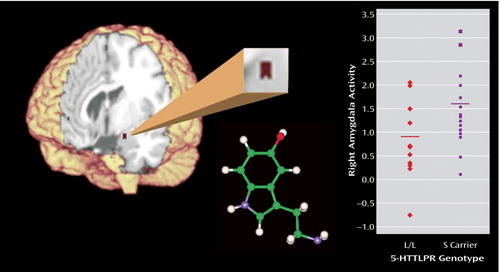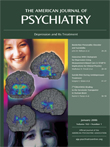Serotonin
Neural transmission at the serotonin synapse plays a central role in the regulation of human mood and temperament. The serotonin transporter protein is one of the critical elements in determining synaptic concentrations of serotonin. There is mounting evidence that genetic variance in the promoter region of the serotonin transporter protein gene (SLC6A4) is associated with differences in human mood, temperament, and response to stress, suggesting this may be an important genetic variant for human behavior. The regulatory variant (called 5-HTTLPR) in the promoter region of SLC6A4 has two common variants (alleles), both normal, the short (S) and long (L). In Caucasians, the genotype frequencies are approximately 36% L/L, 48% L/S, and 16% S/S. The S allele has been associated with a nearly 50% reduction in expression of the serotonin transporter protein, as well as vulnerability for mood disorders (both anxiety and depression) and inadequate response to SSRIs. However, studies have suggested that the neural mechanisms underlying these associations are complex and can be influenced by environmental conditions. Understanding the mechanisms of these associations will allow a more specific appreciation of normal and pathological mood regulation in humans. We have looked at the effects of the S allele on amygdala activation to emotional stimuli. The human amygdala shows activation in response to threatening environmental stimuli, like angry and fearful faces. The figure shows that right amygdala activation is relatively greater in those normal volunteers who have the S allele in comparison to L allele homozygotes when responding to the same threatening faces. These data illustrate the observation that normal heritable variation in serotonin signaling associated with 5-HTTLPR can result in increased amygdala response to provocative stimuli. Evidence suggests that only in the face of environmental duress does this genetically driven variation in amygdala reactivity lead S allele individuals to be more likely to develop pathologic features and illness. This genetic variant, even though associated with increases in amygdala responsivity, does not inevitably result in psychiatric illness, only in the propensity to a pathological response in certain environmental circumstances.
Address reprint requests to Dr. Tamminga, UT Southwestern Medical Center, Department of Psychiatry, 5323 Harry Hines Blvd., #NC5.914, Dallas, TX 75390-9070; [email protected] (e-mail).




